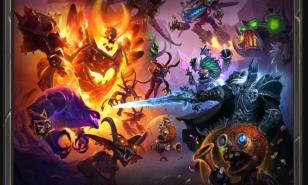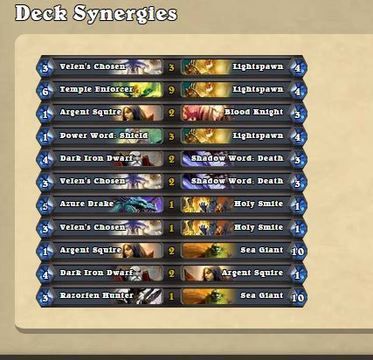
It offers far fewer in-game features than Hearthstone Deck Tracker, but feels bloated and heavy compared to the elegant simplicity of Track-o-Bot. Hearthstone Tracker is the third popular option for deck tracking software, but somewhat pales in comparison to the two options listed above.

This means that although the stats on decks you’re playing will always be very precise, reports on your winrates will be limited to scores vs classes, and not broken down further into specific deck archetypes. The major downside, however, is that Hearthstone Deck Tracker lacks the tools to separate opposing deck archetypes in its stat reports. This is an invaluable tool to any player that experiments regularly with different decks, and is a simple way of dodging the nine deck slot limit currently imposed by Blizzard in the game. Hearthstone Deck Tracker can also export any deck you’ve saved directly into Hearthstone at the click of a button. Thankfully Hearthstone Deck Tracker offers the ability to disable parts or all of this overlay in a very robust settings menu. This can be both a blessing and a curse, as it can become too much of a crutch for your play in the long term, especially if you hope to transition to tournament play where the use of deck trackers is banned. This level of information at your fingertips can allow you to make informed plays without the level of memory, concentration, or calculation that is required to make the same play in a tournament situation. Although this overlay can be intimidating at first, a handy annotated screenshot is available on their GitHub page explaining what each section means. This includes the odds of your opponent holding a particular card in their hand, the odds of you drawing a particular card next turn, which cards were kept in your opponent's hand at mulligan, and which cards have been drawn and played from both player’s decks. So what’s the fuss about? Hearthstone Deck Tracker creates an in-game overlay that provides you with information that otherwise requires a extremely high level of attentiveness and concentration to obtain. Some competitive players have gone so far as calling for it to be banned by Blizzard due to the advantages it provides. Of the three options tested here, Hearthstone Deck Tracker is the most well known and the most controversial. Track-o-Bot also includes other standard features like a built in Arena tracker, game replay playback via a simple text based interface, and import/export functions to allow you to share the same account across multiple devices. The card you’ve added as the new flag may never be drawn in a game, or it may also be a flag for a different build, creating conflicts in the recognition software.
Hearthstone addons hstracker software#
You can create a new deck entry by telling the recognition software to look out specifically for the cards you changed, but this is unreliable for a variety of reasons.

If you change one or two cards in your build as a response to your data on the meta, it’s difficult to get Track-o-Bot to then provide you with the information on your new deck as a separate entity. Although this works fine in theory, it makes it difficult to track the difference in win rate between slight revisions of the same deck. The downside of Track-o-Bot is that it uses the same card recognition process to decide which deck you’re playing. That’s why keeping personal stats is crucial for players hoping to improve performance. However, your own experience, depending on the server you play and the time of day, may well differ wildly. Meta snapshots like those provided by Tempo Storm (opens in new tab) and Liquid Hearth (opens in new tab) can provide you with data on which decks are supposedly common or should perform well.

It's also easy to lose track of exactly how well a deck has performed for you over a day's play. So why is objective data important? Well, it's easy to overestimate the amount of Face Hunter you're actually playing against: those losses tend to feel extra painful, and so they stick out in your mind. Importantly, all three of the tested options here are, at the time of writing, deemed safe for use by Blizzard and do not contravene any aspect of their ToS. They achieve this through a background process that records data from the Hearthstone client through various methods ranging from image recognition to software hooks.

He also writes guides for Icy Veins, all while finding time to be a national Yo-Yo champion.ĭeck Trackers will take your ladder matches and turn them into easily quantifiable data that you can then base decisions on. Simon ‘Sottle’ Welch is a multi-Legend rank player, tournament winner, and caster who regularly streams on Twitch (opens in new tab). Photo from H2K Gaming (opens in new tab).


 0 kommentar(er)
0 kommentar(er)
